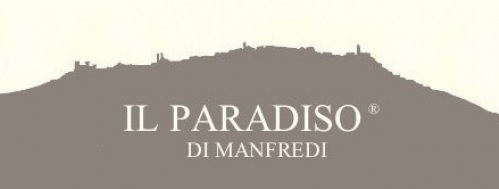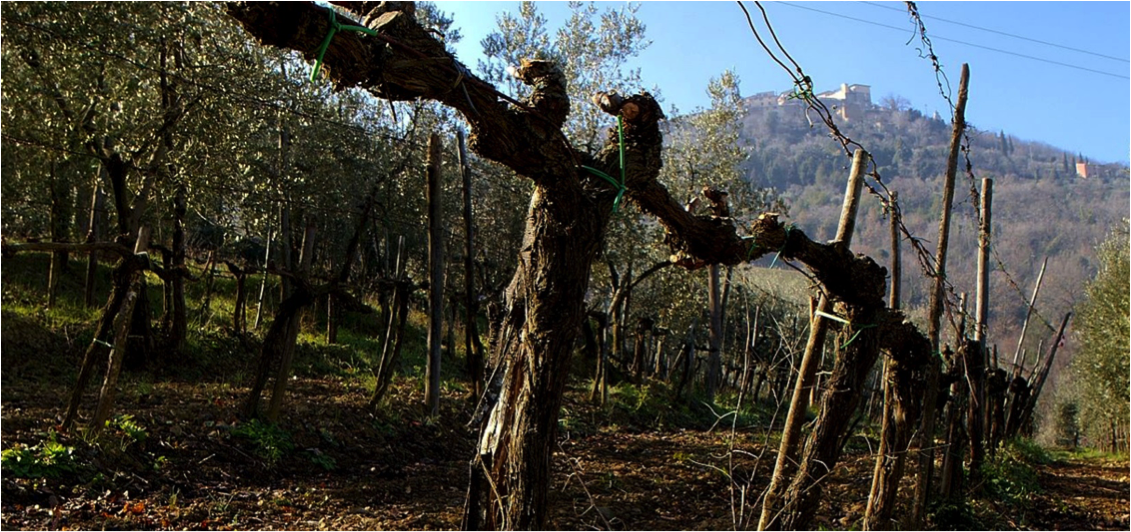Not a lot!

We recently received communication from our friends at Il Paradiso di Manfredi in Montalcino. Another example of appellations falling a long way from the tree of sanity:
On this occasion we inform you that this year we will sell the vintage 2011 with the name TRENTENNALE, because it is the 30th year from our first bottling with label, in 1981.
We had to call it IGT, because the official tasting commission rated it as unsuitable for the appellation.
But the document released by the office in charge stated the following: “the results of the wine analysis ARE within the parameters established by the classification regulations and by the law.”
Maybe sometimes natural wines are not fully understood for their individuality, character and diversity!
We like this wine very much and, as all our wines, it follows the seasonal trend and the identity of the vintage.
As you can imagine, we are very sad that the wine didn’t receive the appellation, but at the same time this has reinforced even further our ideas and our way to proceed in producing wines hand in hand with nature.

A brief history of the winery for context:
Il Paradiso di Manfredi takes its name from Manfredi Martini (an expert in agriculture and viticulture, born in Montalcino in 1914) and from the estate “Il Paradiso”, a typical country manor built at the end of the 1800s and purchased by Manfredi and his wife Fortunata in 1950. In 1967, Manfredi with some farmers founded the Consorzio del Brunello di Montalcino. Today wine is still produced in the same spirit of the tradition, history and typical nature of the terroirs.
Great Brunello (like any wine) is made by working meticulously in the vineyard. The cycle of work on the vines begins in January with the first dry pruning during the proper lunar phase. Towards the end of April green pruning take place, including debudding, shoot-thinning and removing leaf-clusters. Each vine on this tiny estate is cared for intimately.
Il Paradiso di Manfredi today is one of the best expressions of traditional Brunello di Montalcino. Viticulture and vineyard rhythm is effectively biodynamic. Pesticides and weedkillers are eschewed, the waxing and waning of the moon determines activity in the vineyard and the winery. They hand-pick the grapes, the wild ferment takes place in concrete vats (no temperature control…) after which the wine spends 36/40 months in big casks of Slavonian oak (25/ /30 hl). By law a Brunello di Montalcino may be ready for the market in January five years after the harvest…for Florio a Brunello is ready when… it is ready. Truly a Grolsch moment. Florio also produces a Rosso di Montalcino from the same vineyard… the only difference between the two wines is the period that it spends in wood (usually ten to twelve months).
After having obtained the recognition of the Commissione del Consorzio del Brunello and from the Chamber of Commerce of Siena, the wine is bottled “by gravity” to avoid the stress caused by mechanical pumps. The wine develops in bottles for many years and is strengthened by this slow maturation. and pure characteristics.
The wines are everything you hope for in great Sangiovese, displaying wicked wild cherry fruit along with notes of herbs, leather, liquorice, pepper and spice and nascent prune, tar, olive and tobacco aromas. It’s so savoury that the food you are thinking of cooks and present itself at the table.
The main thing is that when you taste the Rosso, Brunello and Brunello Riserva from this tiny estate in Montalcino you are instantly transported to a place. When we speak of Sangiovese we are reminder of its sanguine quality; these are pure unmediated wines and beautifully evolved. We recall with enormous fondness the 2002 vintage, where in a year that none of the major estates in the region were able to produce a wine befitting the nobility of the appellation, Il Paradiso released a wine that sang (no pun intended) of the vineyard and the craft of farming.
There is a lot more than one rotten appellation in the new barrel of the wine world. Almost every year the accreditation system is further discredited by crass judgements like the above. Jancis Robinson wrote about this in the Financial Times a few weeks ago. In the end, whatever the label, it is all about the wine, and the more we focus on that and the grower and the place, the less we need the imprimatur of appellation to sell. If, as a grower, you are unconcerned by the perception of what a typical wine from a region is like, and want to make a wine that is true to the vintage and true to the origin of your vineyard (and true to your beliefs) you might as well eschew appellation altogether.


Many years ago I enjoyed Brunello, and indeed Rosso, du Montalcino. I almost never buy it now, but “Il Paradiso” has been an exception. And I do think they make an exceptional wine. I am sure that with enough love from their importers they will learn that they do not need the DOCG to reach wine lovers who will appreciate their wines. It reminds me of Domaine du Pech and the Buzet wine police. Trouble with these stiff old sods is that they don’t like it up ‘em.
You’re right – I don’t think many of our growers need the appellation to sell their wines any more. But it is funny that the more authentic the wine, the more likely it is to be considered atypical.